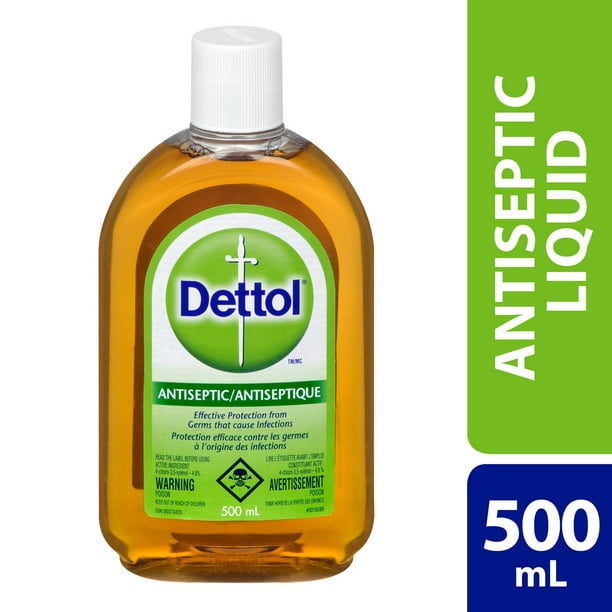
What is chloroxylenol (CHL)? And how is it used?
Chloroxylenol for treating scalp conditions. As the name suggests, chloroxylenol is a chlorinated phenol derivative. Chloroxylenol is known by a variety of other names including parachlorometaxylenol (PCMX), 4-chloro-3,5 xylenol; 4-chloro-3,5-dimethylphenol; 2-chloro-m-xylenol; 2-chloro-5-hydroxy-m-xylene; 2-chloro-5-hydroxy-1,3-dimethylbenzene; 4-chloro-1-hydroxy-3,5-dimethyl benzene; and 3,5-dimethyl-4-chlorophenol.
CHL has been used as an antiseptic (disinfectant) and a preservative in cosmetics, hand sanitizers, medicaments, and some oils. CHL exhibits broad spectrum antimicrobial activity and is effective against bacteria, fungi, algae, and viruses. It is particularly effective against a wide variety of gram-positive and gram-negative bacteria.

How does chloroxylenol work for hair?
The exact mechanism of action of CHL is still unclear, but the hydroxyl (–OH) groups of CHL are known to interact with cytoplasmic membrane proteins in the cell membrane of microbes, leading to cell disruption and death.
Shampoos containing chloroxylenol are marketed for the treatment of seborrheic dermatitis and/or dandruff flakes. Chloroxylenol has been shown to penetrate the epidermis, dermis, and the hair follicles of the scalp better than conventional shampoo treatments, such as selenium, zinc pyrithione or coal tar.
What ingredients does it work well with?
Chloroxylenol has been shown to work well with ketoconazole, amphotericin B, amorolfine, anidulafungin, butenafine, butoconazole, candidin, carbol-fuchsin, caspofungin, cidopirox, clotrimazole, dapsone, econazole, emlkonazole, fluconazole, flucytosine, gentian violet, griseofulvin, haloprogin, itraconazole, mafenide, micafungin, miconazole, naftifine, nystatin, oxiconazole, pimaricin, posaconazole, ravoconazole, rimocidin, silver sulfadiazine, sulconazole, terbinafine, terconazole, tioconazole, tolnaftate, undecylenic add, vaddin A, voriconazole, triclosan, alcohol, polyalcohols, hydrogen peroxide, chlorine dioxide and triclocarban. See US8633191B2
What ingredients does it not work well with?
CHL does not work well with PEG 6000, polyethylene glycol, polysorbate 80, and methylcellulose. It also does not work well in aqueous solutions containing ceteth-20. These diminish its antimicrobial activity.
What side effects can it have?
CHL can occasionally cause allergic contact dermatitis (ACD). CHL can also cause skin irritation and excessive hair fall. People with known contact allergies should perform a patch test before using CHL.
CHL also has the potential to cause environmental health risks as it has been shown to be toxic for zebrafish embryos, and impacts hatching, embryonic mortality, morphology (body curvature), and neurotoxicity. Studies have reported the chronic genotoxicity and histopathology effects of CHL on freshwater fish.
However, studies have indicated a low potential for harm related to consumer or health-care worker exposure to chloroxylenol in liquid hand soap and dishwashing soaps.
Who should consider using it and why?
Use chloroxylenol for treating scalp conditions in those suffering from seborrheic dermatitis and/or dandruff flakes, especially if other conventional anti-fungal treatments are not working such as selenium sulfide and pyrithione zinc.
CHL has been shown to penetrate the epidermis, dermis, and the hair follicles of the scalp better than conventional shampoo treatments, such as selenium, zinc pyrithione. In addition, CHL also has potent anti-bacterial properties.
Not many may know that this is actually Dettol.

Some products with chloroxylenol:
Denorex® [*affiliate links allow us to earn a commission if you make a purchase, at no additional cost to you.]
Denorex contains effective anti-dandruff medicine plus an extra anti-itch ingredient found in no other dandruff shampoo. The Denorex® tingle tells you it is working to provide temporary relief from the itching, scaling and flaking of dandruff. Denorex® Extra Strength + conditioners contains medicine to control the stubborn symptoms of psoriasis, seborrhea, and dandruff, while the conditioners give your hair body, shine and manageability.
MEDICINAL INGREDIENTS: coal tar solution 10% w/v, menthol 1.5% w/v, chloroxylenol 0.5% w/v
NON-MEDICINAL INGREDIENTS: avocado oil, citric acid, dimethicone copolyol, FD&C red #40, fragrance, ethylene glycol distearate, hydroxypropyl-methylcellulose, lauramide DEA, panthenol (provitamin B5), PEG-30 lanolin, quaternium-80, ricinoleamidopropyl ethyldimonium ethosulfate, TEA-lauryl sulfate, tocopherol acetate (vitamin E), water

DENOREX maximum itch relief [*affiliate links allow us to earn a commission if you make a purchase, at no additional cost to you.]
MEDICINAL INGREDIENTS –
Active: Coal tar solution 9.0% v/v (equivalent to 1.8% w/w coal tar), Menthol 1.5%
NON-MEDICINAL INGREDIENTS: Alcohol 7.3%, Avocado oil, Chloroxylenol, Citric acid, Dimethicone copolyol, FD&C red #40, Fragrance, Glycol distearate, Hydroxypropyl methylcellulose, Lauramide DEA, Panthenol (provitamin B5), PEG-30 kanolin, Quaternium-80, Ricinoleamidopropyl ethyldimonium ethosulfate, TEA lauryl sulfate, Vitamin E acetate, Water

Chloroxylenol for treating scalp conditions is effective for some. Find more remedies for other scalp conditions here.
REFERENCES
Liebert, M. A. “Final Report on the Safety Assessment of Chloroxylenol.” Int. J. Toxicol 4 (1985): 5147-169.
Yost, L. J., Rodricks, J. D., Turnbull, D., DeLeo, P. C., Nash, J. F., Quiñones-Rivera, A., & Carlson, P. A. (2016). Human health risk assessment of chloroxylenol in liquid hand soap and dishwashing soap used by consumers and health-care professionals. Regulatory Toxicology and Pharmacology, 80, 116–124.
https://journals.sagepub.com/doi/pdf/10.3109/10915818509078689- Liebert, M. A. “Final Report on the Safety Assessment of Chloroxylenol.” Int. J. Toxicol 4 (1985): 5147-169.






